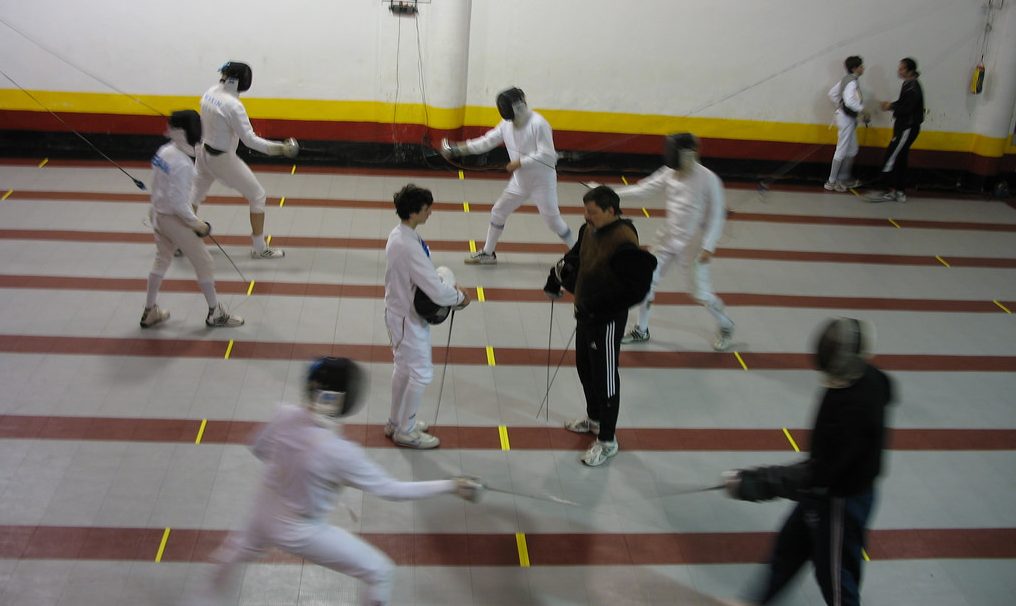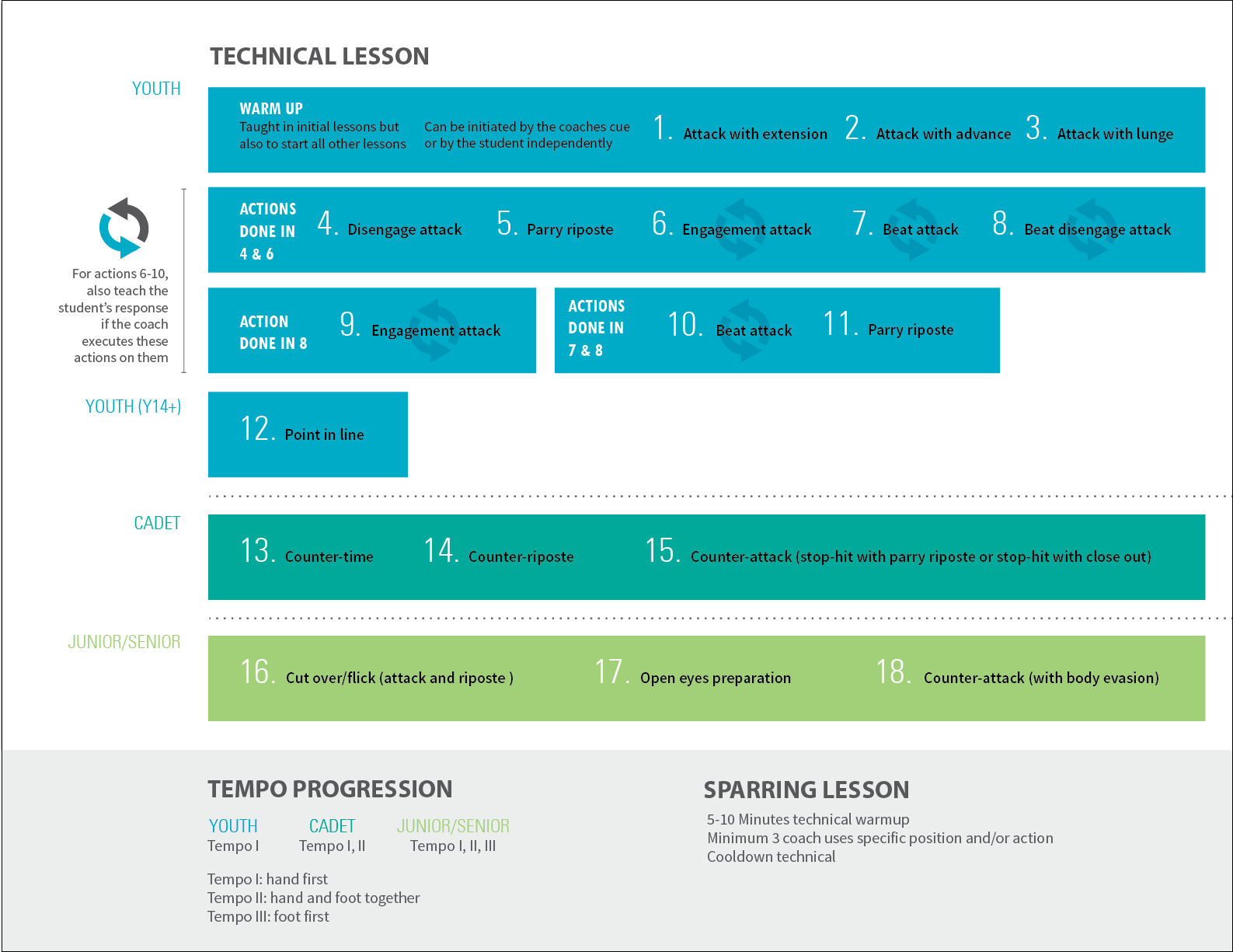One section in my first article about the FIE Coaching Academy generated more questions than any other. It discussed the criticism that I received about my lessons on day one of the Academy; that my lesson didn’t follow a system:
His initial critique was that the lessons all appeared to lack a system. The actions were drawn from a hat, and executed without a logical progression of what might come next. One of his students arrived during this talk, and Zoltan gave her a long lesson that he told us ‘demonstrated his system of fencing completely.’
That feedback has me and others asking, What is a fencing system?
A lot of people tie the idea of a “system” to specific countries. For example, “the French system’”or “the Korean system.” I’ve also heard coaches make reference to their own “system.” But what are they talking about? We just finished our third week here at the Academy and my answer to this question is different now than it would have been before I came here, or from what I might have said the first week. I expect it will continue to evolve as we move forward.
Early in my coaching career, I would have said that a fencing system describes the techniques used to execute different actions. For example, parry four is classically described in supination — but in modern foil fencing, four is almost always executed “partially pronated.” How much pronation? That would be up to the system, of course.
Before I came to Budapest, I started to think of a fencing system as focusing more on what actions are taught, rather than specifically how to perform any particular action. For example, one system might teach a young student to use a false counter-attack into an attacking opponent to create a moment where if the opponent continues to prepare, or commits to a bad attack, the student can make a real counter-attack. Another system might not spend time training young students on counter-attacks at all for two reasons:
- Prioritizing time spent training the student to attack is seen as more valuable; and,
- Let’s be real, kids are going to practice counter-attacking all on their own.
I see the merits of both viewpoints. If the student is going to counter-attack, you want them to create a situation where it is likely to be successful. To do that well, you need to practice preparing your counter-attacks like you would an attack. I also see that training time for children is often limited, and there are certain actions that you probably wouldn’t want to spend an inordinate amount of time training them to execute. Ten-year-olds probably don’t need to be practicing “the Chamley-Watson” in their limited time with the fencing coach.
After my first week here, I started to see the concept of a fencing system as something less than which actions get priority in training time, and more of a sequence by which actions are introduced. More than just not teaching kids to counter-attack, or not spending time in a lesson working on flicks, or whatever. I mean fundamental ideas, like the concept of a circle parry six is taught before parry four. The system here starts with a pretty standard warmup:
Extension distance attack -> Advance distance attack -> Lunge distance attack -> Advance-lunge distance attack
But what comes next? Here, what comes next is more attacking. The attacking fencer has the control in foil fencing, and control is key. Too much time spent training young students to defend encourages defensive fencing. If you want students to attack, the student needs to feel comfortable initiating attacks on their own. So the next actions were:
Disengage from outside to inside attack with lunge -> Disengage from inside to outside attack with lunge -> And then 1-2 (double disengage) attacks with advance-lunge
Then the lessons moves briefly to defense before shifting focus back to attacking:
Circle parry six / riposte -> Circle six preparation, attack -> Circle six preparation, disengage attack -> engage four preparation, attack
Then, parry four / riposte when the coach does engage four preparation, attack to the student
As the course has gone on, I’ve come to see that a fencing system is more than a list of actions, how they’re taught, and an order in which to teach them. What I failed to see initially in these early lessons was the concept of tactics and tactical progression inherent in the construction of the fencing lesson. The actions aren’t taught in a vacuum; they are prefaced with the necessary technical skills to perform all their parts, but also are presented in a way that answers questions like “What if your opponent does this action we just worked on to you?” Or “How might your opponent change to deal with this action you just did?”
A fencing system has to teach the student to answer these questions, because a fencing system has to be more than teaching people fencing moves. It should teach students how to analyze a problem, how to make decisions, and how to be confident in their execution. A successful fencing system has to be a process for teaching people how to fence and every element that fencing includes.




